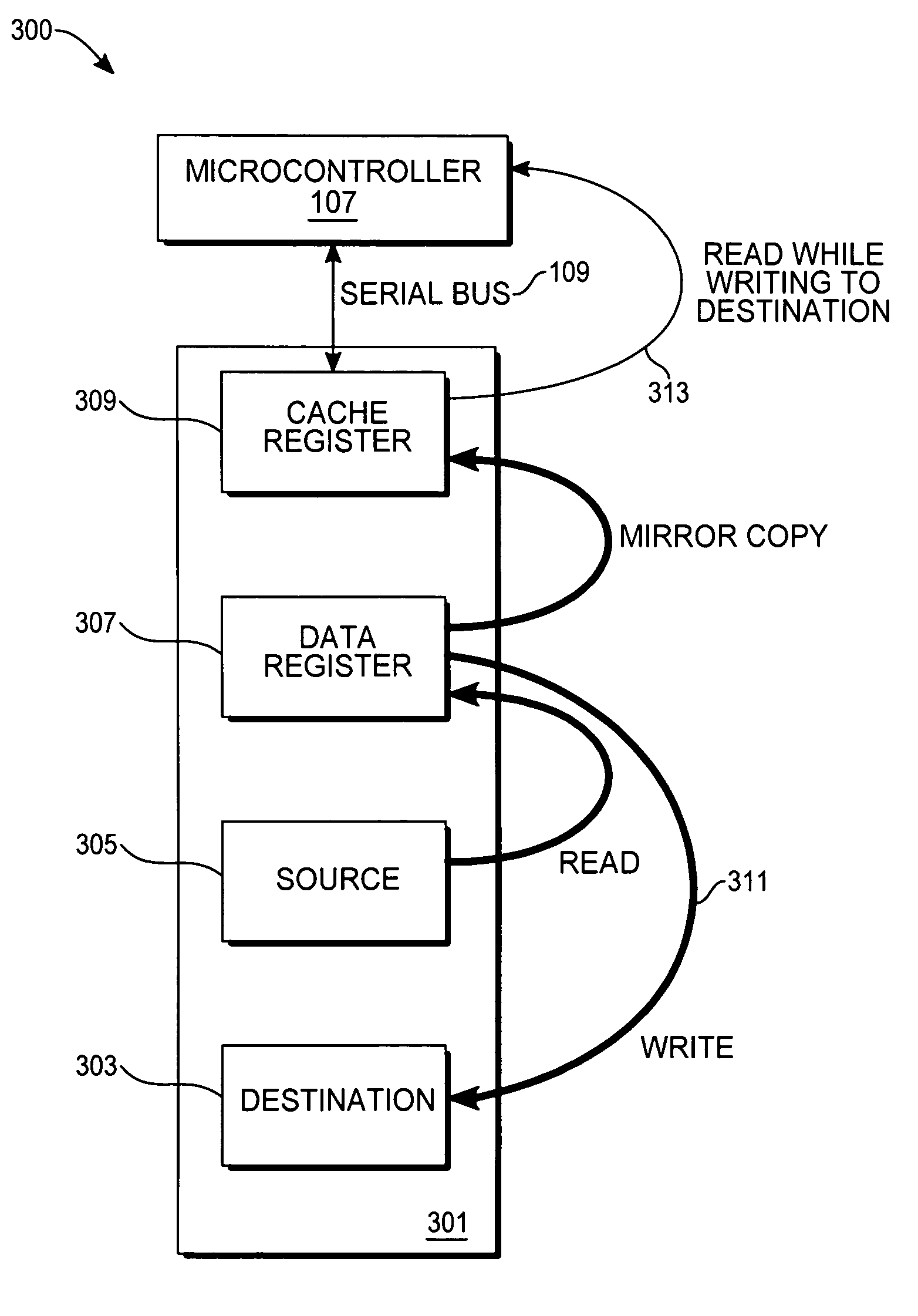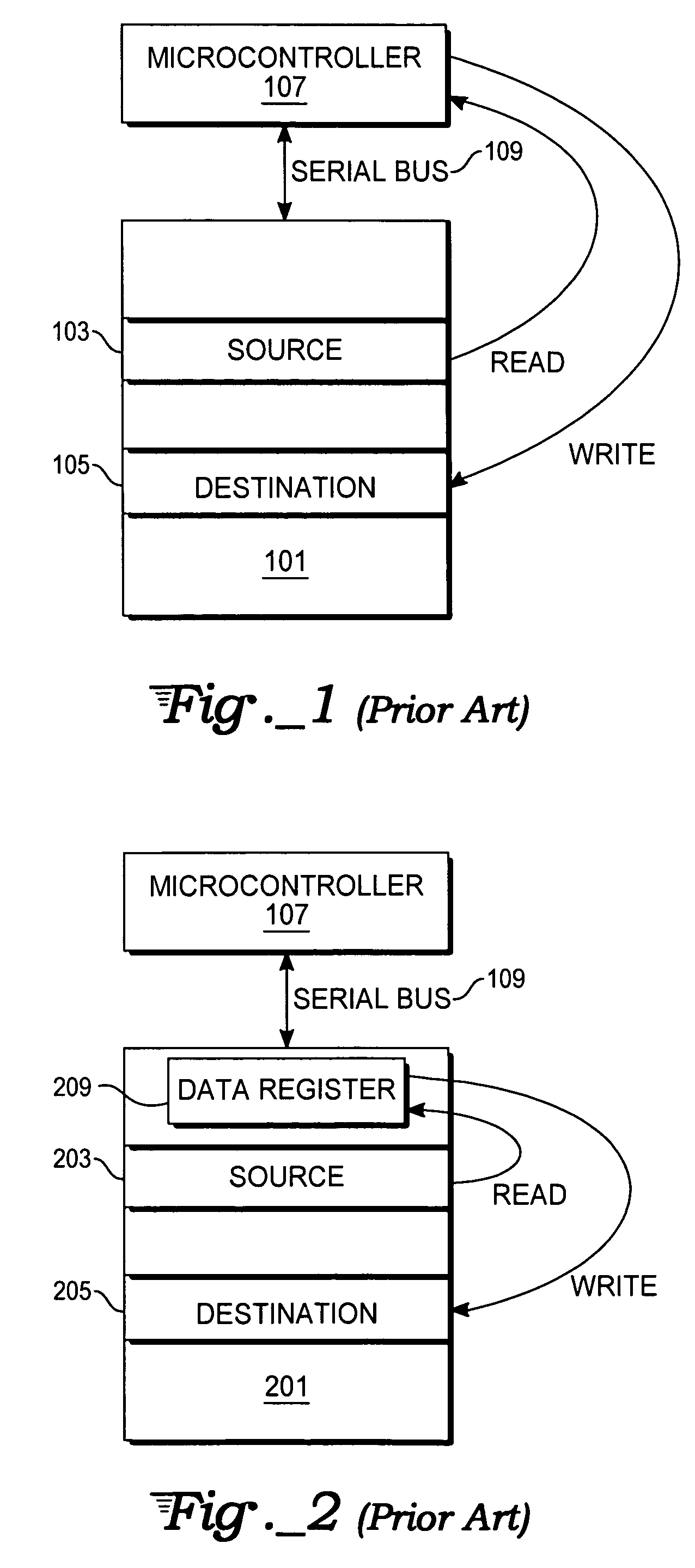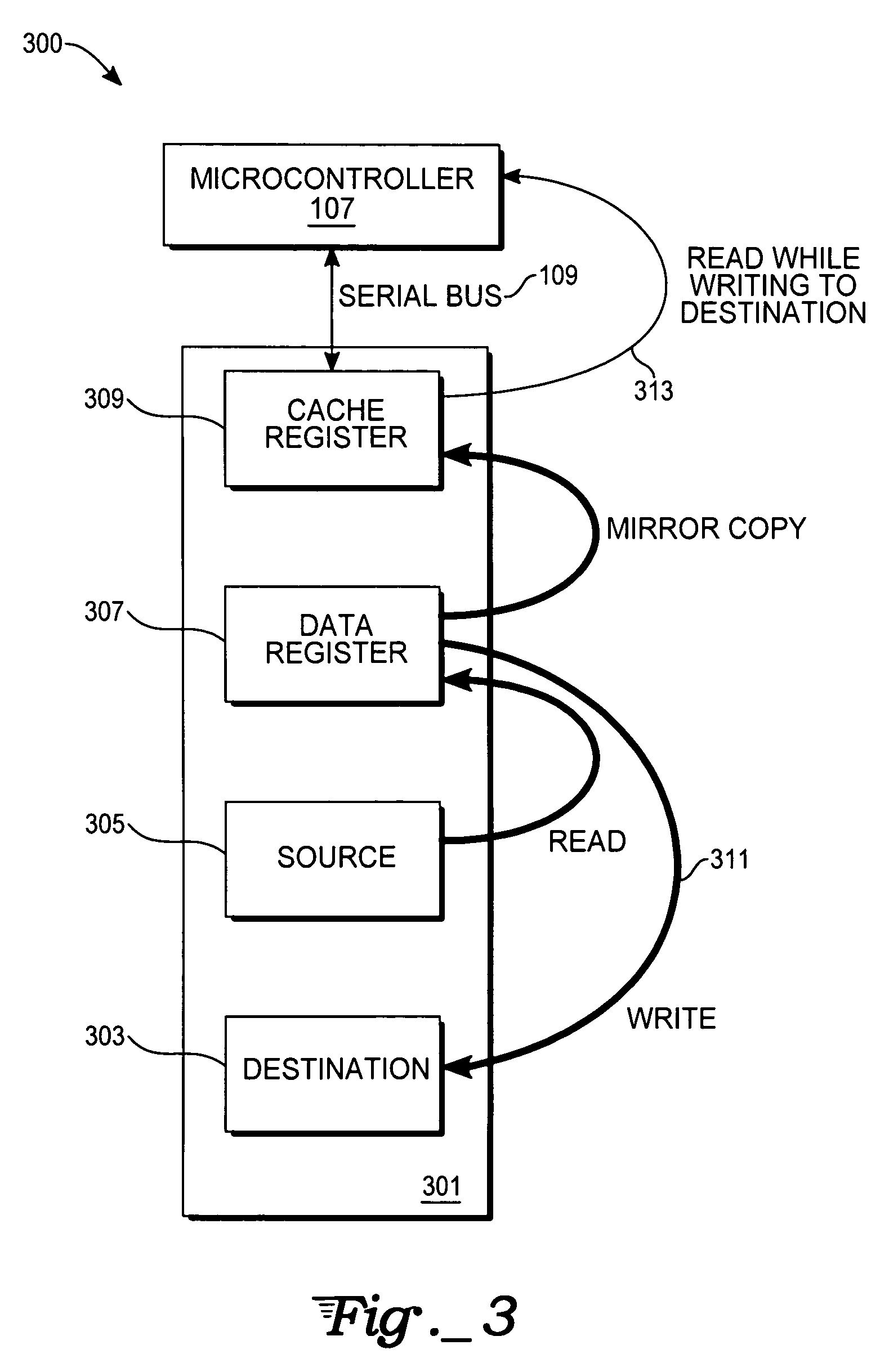Simultaneous external read operation during internal programming in a flash memory device
a flash memory device and internal programming technology, applied in the field of semiconductor memory devices, can solve the problems of incorrect data writing to the destination, blind copying, and user's inability to know if the correct data has been copied,
- Summary
- Abstract
- Description
- Claims
- Application Information
AI Technical Summary
Benefits of technology
Problems solved by technology
Method used
Image
Examples
Embodiment Construction
[0025]With respect to FIG. 3, a block diagram of a system 300 for performing a simultaneous external read operation during an internal programming operation in a flash device is shown. FIG. 3 includes a flash memory device 301, a destination address location 303, a source address location 305, a data register 307, and a cache register 309. A state machine (not shown), which may, for example, be co-located on an integrated circuit chip containing the flash memory device 301, is designed to control and carry out the routine, described infra.
[0026]In one embodiment, the flash memory device 301 is a NAND flash memory device. Alternatively, the flash memory device 301 could be based on either NOR or AND logic devices. Once a copy-back operation command has been asserted, data from the source address location 305 are read into the data register 307. The data read into the data register 307 may be, for example, an entire page of data. The page size, in one embodiment, consists of 256 byte ...
PUM
 Login to View More
Login to View More Abstract
Description
Claims
Application Information
 Login to View More
Login to View More - R&D
- Intellectual Property
- Life Sciences
- Materials
- Tech Scout
- Unparalleled Data Quality
- Higher Quality Content
- 60% Fewer Hallucinations
Browse by: Latest US Patents, China's latest patents, Technical Efficacy Thesaurus, Application Domain, Technology Topic, Popular Technical Reports.
© 2025 PatSnap. All rights reserved.Legal|Privacy policy|Modern Slavery Act Transparency Statement|Sitemap|About US| Contact US: help@patsnap.com



